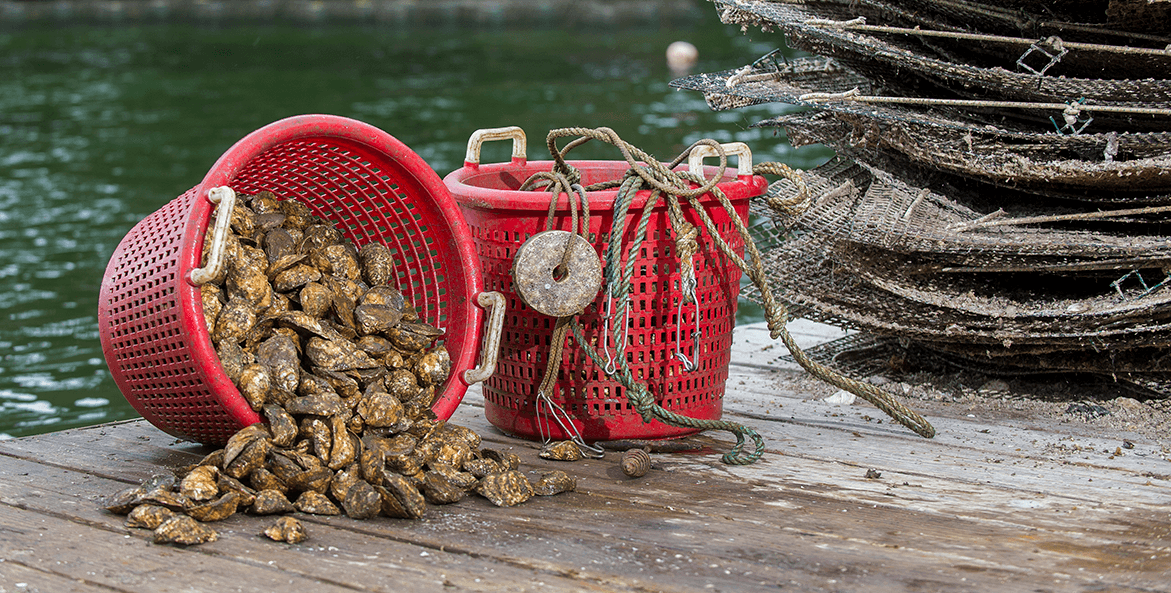The Chesapeake Bay Foundation (CBF) released a new economic analysis today that found oyster aquaculture operations in Maryland contribute an average of $9 million per year to the state’s economy and the industry has grown by about 24 percent per year since 2012.
However, that continued growth is being threatened due to business closures associated with the coronavirus pandemic.
“In 2010, the Maryland General Assembly recognized the importance of rebuilding oyster populations and unanimously passed reforms to help accelerate the growth of oyster aquaculture in the state. It’s clear that that effort has paid off. While the oyster aquaculture industry is still in its early stages, the industry has demonstrated it’s an important part of Maryland’s economy,” said Allison Colden, Maryland Fisheries Scientist for the Chesapeake Bay Foundation. “Unfortunately, the oyster aquaculture industry is likely to face some significant challenges ahead related to the coronavirus. Nearly seventy percent of seafood in the U.S. is consumed at restaurants, many of which have been shuttered to contain the virus’ spread. Without these markets, oyster farmers, mostly small and family-owned businesses, may struggle to stay in business.”
Ongoing closures in Maryland are already affecting oyster aquaculture operators.
“Restaurant sales, the backbone of our industry, basically went to zero in a matter of mere days,” said Scott Budden, co-owner of Orchard Point Oyster Co. in Stevensville, Maryland. “Some operations, like ours, are pivoting to 100 percent direct-to-consumer retail sales to generate revenue. Others may not have this capability or are waiting for the coronavirus to pass before resuming sales. We are doing local pick-ups and expanding into cold shipping at this very moment. It’s hampering our ability to focus on 2020 husbandry and nursery operations. This situation could be a major impediment to scaling, perhaps just as severe as 2018’s historic rains were on the industry.”
While recent events are testing aquaculture operators, the new economic report found significant growth in the industry since the state began reforming regulations affecting oyster aquaculture in 2010. The economic impact report was commissioned by CBF and conducted by researchers at Virginia Tech and Engle-Stone Aquatic.
Key findings:
- The total bushels of oysters produced by aquaculture operations in Maryland has grown from less than 1 percent of the bushels harvested in the public fishery in 2012 to 42 percent of the public fishery’s total in 2018. If the growth continues at this rate, the aquaculture industry could be producing more bushels of oysters than the public fishery sometime in the next 10 years.
- In 2018 oyster aquaculture farms accounted for $8.1 million in economic impacts and supported more than 100 jobs throughout the state—despite dealing with low salinity from historic rainfall in the region. In 2017, the oyster farms accounted for $9.7 million in economic benefits. The oyster aquaculture industry supports numerous parts of Maryland’s economy, with aquaculture linked to more than 450 economic sectors.
- The study likely underestimates the total economic impact of oyster aquaculture in Maryland. Due to low response rates from seafood processers, wholesalers, and retail operations such as restaurants, the economic benefits reported represent only the economic benefit of aquaculture farms and not the complete supply chain.
Oyster aquaculture operators lease acres of Bay bottom or space in the water column from the state to plant juvenile oysters and raise them to market-size. The process can take about two years to grow oysters from spat to market-size adults. While they grow, farmed oysters filter water, up to 50 gallons per oyster per day, and sequester nitrogen and phosphorus in their shells and tissues. When harvested, the nitrogen and phosphorus used by the oysters to grow are removed from the Bay, helping to improve water quality. Finally, oyster aquaculture gear—such as cages—can provide many of the same habitat benefits to fish and crabs that would normally be found on an oyster reef.
With restaurants shut down, some oyster aquaculture businesses are turning to direct marketing to consumers, providing local delivery or pick-up options for purchasing oysters. A list of local oyster farmers offering these options is available on the CBF website.
Preliminary economic data from 2019 indicated that the state’s aquaculture industry is continuing to grow. However, the future of the industry and its sustained growth remains uncertain as the industry remains affected by the spread of coronavirus.
The full report and executive summary can be found here–Shellfish Aquaculture: An Economic Engine for Maryland.




